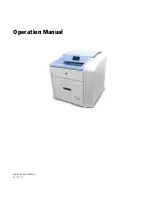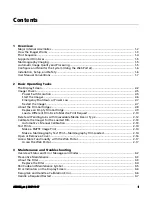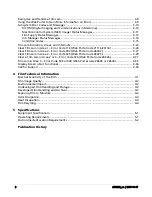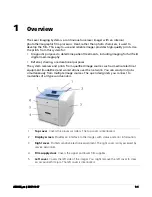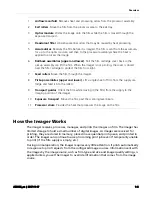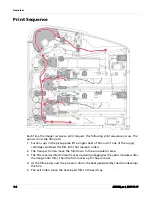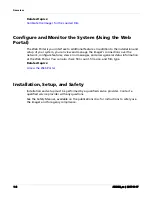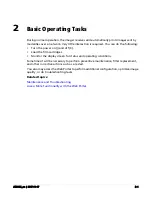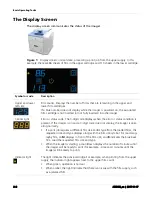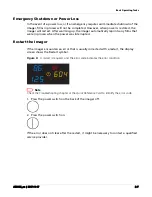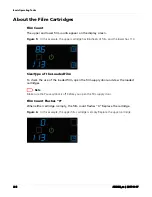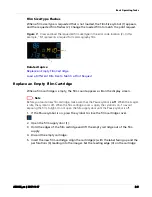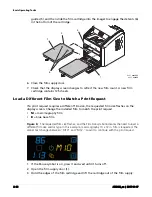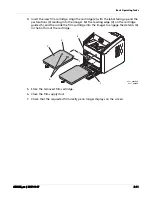
Overview
AD3435_en
|
2017-11-17
1–3
How the Imager Works
The imager receives, processes, manages, and prints the images on film. The imager has
limited storage to hold a small number of digital images. As images are received for
printing, they are stored in memory, placed in a sequential print queue, and printed in
order. The imager can continue to accept incoming print jobs even if temporarily unable
to print (if the film supply is empty, etc.).
During normal operation, the imager requires very little attention. It prints automatically
in response to print requests from the configured image sources. Information sent with
the images by the image source, such as film type and size and image quality settings, is
applied unless you set the imager to override information that comes from the image
source.
1
Airflow manifold
. Removes heat and processing odors from the processor assembly.
2
Exit rollers
. Move the film from the processor area to the exit tray.
3
Optics module
. Writes the image onto the film while the film is moved through the
exposure transport.
4
Deodorant filter
. Absorbs potential odors that may be caused by heat processing.
5
Accumulator
. Receives the film before it is imaged. The film is sent from the accumula-
tor up to the optics module, and then to the processor assembly where the heat is
applied to process the image.
6
Rollback assemblies (upper and lower)
. Roll the film cartridge cover back so the
pickup assembly can lift the film. When the imager is not printing, the cover is closed
over the film cartridge to protect the film from light.
7
Feed rollers
. Move the film through the imager.
8
Pickup assemblies (upper and lower)
. Lift a single sheet of film from the supply car-
tridge and feed it into the rollers.
9
Transport guides
. Orient the film while moving it (the film) from the supply to the
imaging portion of the imager.
10
Exposure transport
. Moves the film past the scanning laser beam.
11
Processor
drum
. Provides the heat that processes the image on the film.

